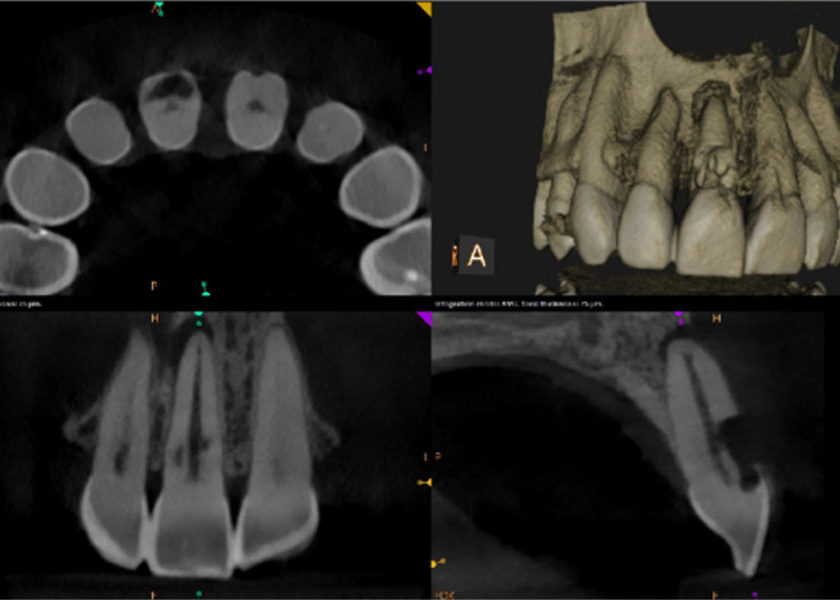Referring Dentists > Articles

Once considered to be a rare condition, cervical invasive resorption seems to be on a dramatic rise. In addition to its pervasiveness, this condition comes with its own set of challenges.
- Etiology. It is thought that tooth resorption may occur following injuries to or irritation to the periodontal ligament and/or dental pulp and it is a frequent sequelae following traumatic injuries, orthodontic tooth movement, or chronic infections of the periodontal structures.
- Diagnosis. There may be no external signs, and the resorptive condition is often detected by routine radiographic examination. Where the lesion is visible, the clinical features vary from a small defect at the gingival margin to a pink coronal discoloration of the tooth crown resulting in ultimate cavitation of the overlying enamel. The condition is usually painless unless pulpal or periodontal infection develops. Radiographic features of resorptive lesions vary from well-delineated to irregularly bordered mottled radiolucencies, and these can be confused with dental caries.
- Treatment. Resorption can occur as a single entity or a combination of internal and external defects can occur simultaneously on the same tooth. Effective management and appropriate treatment can only be carried out if the true nature, history and exact location of the resorptive defect is known. Cone Beam Computed Tomography (CBCT) is an important adjunct for the diagnosis and treatment of resorptive defects.
- Classification. The various types of root resorptive defects have been organized and classified in a variety of ways. In an attempt to eliminate confusion, a clinical-related classification system based on stimulation factors has been developed and is outlined below:
- Pulpal infection root resorption (internal and/or external)
- Periodontal infection root resorption
- Orthodontic pressure root resorption
- Impacted tooth or tumor pressure root resorption
- Ankylotic root resorption
